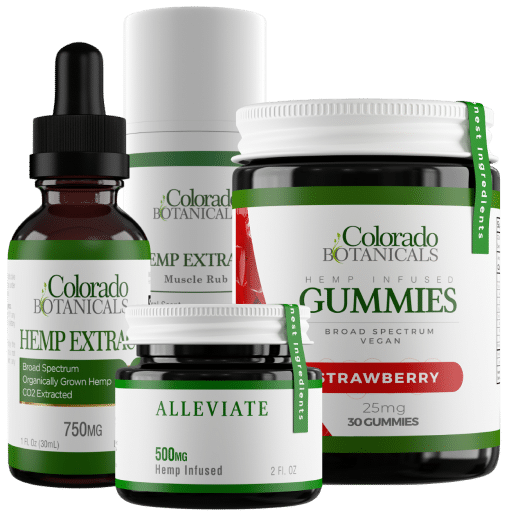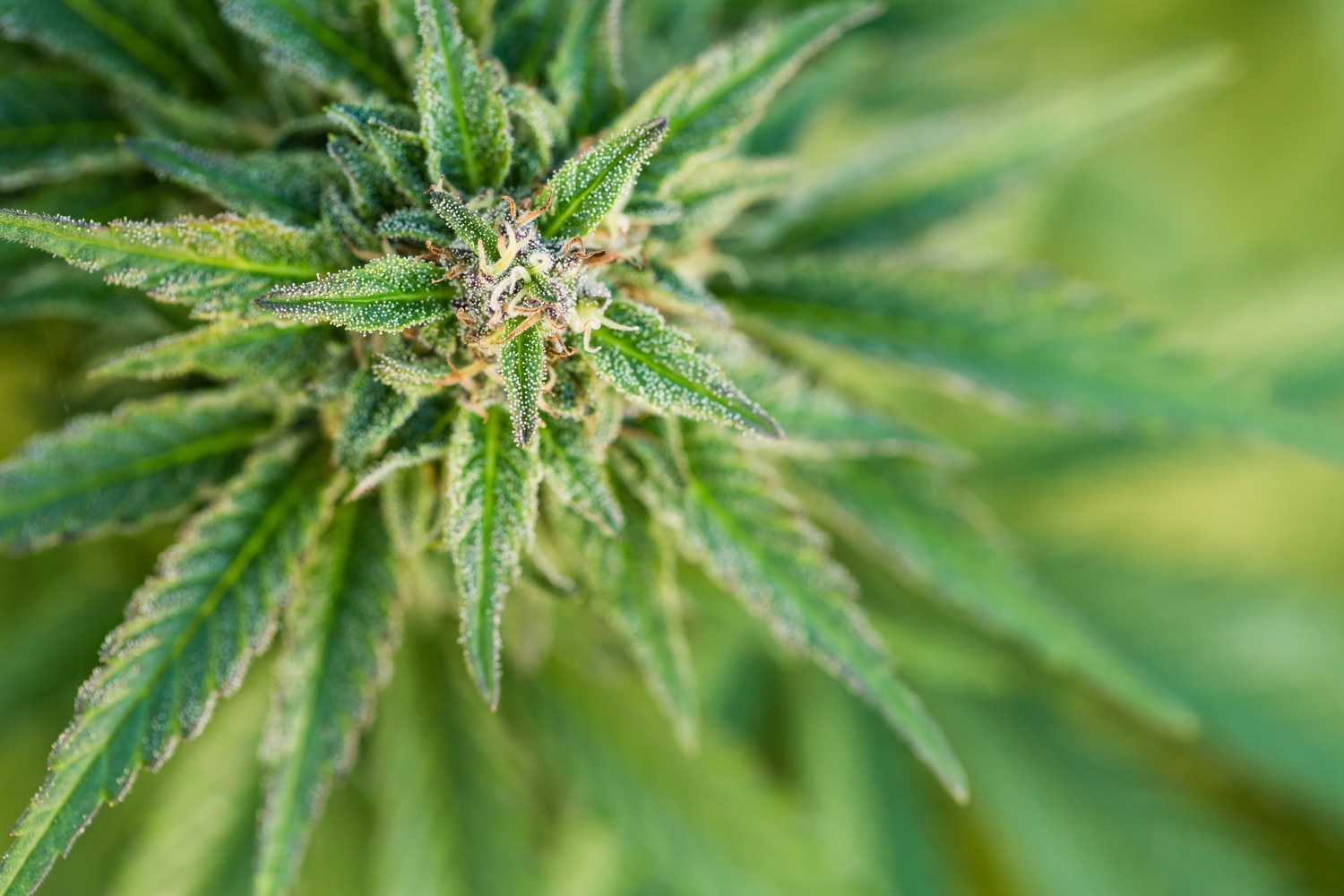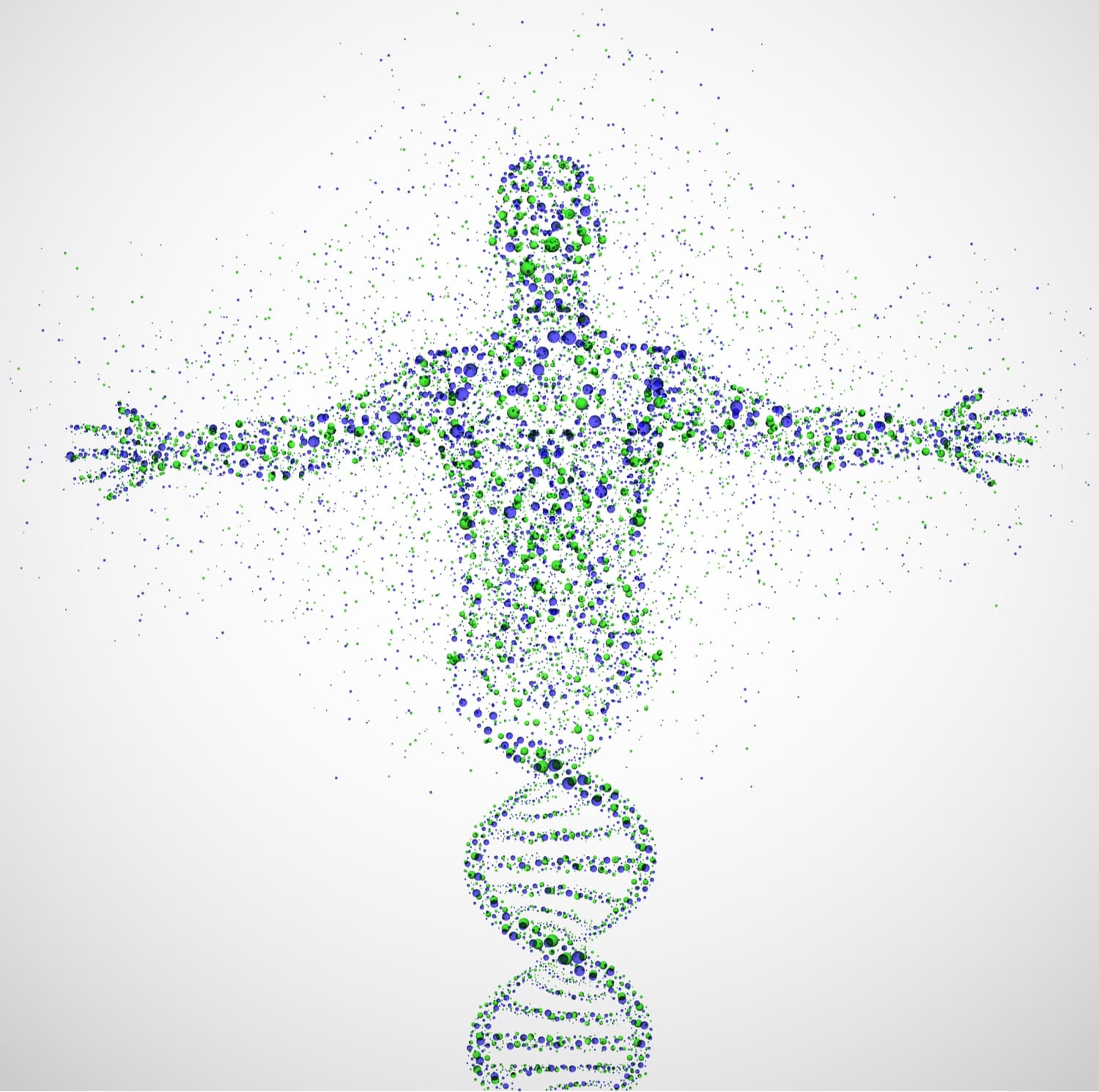How long it takes for CBD oil to work depends on several factors. For example, CBD oil tinctures work marginally faster than other consumption methods due to sublingual absorption.
Although CBD is beneficial any way you choose to take, it still does take time for CBD to kick in, thanks to the trip it takes through our system.
So how long does it take for CBD oil to work and why? To better understand this, we first need to look at CBD, its mechanism, and consumption methods.
How Does CBD Interact With the Body?
We still have a lot to learn about CBD’s potential, but its mechanism is relatively well-understood. A lot goes on inside your body when you consume CBD. There’s so much to discuss that we could go on forever, so we’ll stick with the basics.
The Endocannabinoid System
The endocannabinoid system (ECS) is a broad-reaching assembly of receptors found throughout the body. Classified as CB1 and CB2, these receptors are found primarily in the central and peripheral nervous systems, respectively.
Our bodies produce their own cannabinoids, which we know as “endocannabinoids, and those found externally in cannabis are known as “phytocannabinoids.”
Endocannabinoids maintain a certain physiological and neurological balance, referred to as “homeostasis,” which is essential for physical and mental health.
CBD and the ECS
Some phytocannabinoids, like THC, bind well to CB1 and CB2 receptors, while others might only bind to one. However, in a few cases – including CBD – a cannabinoid doesn’t affect CB1 or CB2.
Wait a second. How can CBD interact with the ECS if it doesn’t bind well to either receptor? Here is where things get interesting.
Although CBD doesn’t directly affect the ECS compared to cannabinoids like THC, CBD still works with other critical receptors.
CBD and Other Receptors
CBD is known to impact various other non-cannabinoid receptors directly. However, this interaction is what gives CBD many of its therapeutic properties.
Multiple studies were done on the role of CBD and different key receptors, specifically:
CBD’s dynamic here has tremendous potential. Studies showed promise when they examined CBD’s possible physical and neurological benefits.
CBD and Endocannabinoid Receptors
As we said, CBD doesn’t bind well to the CB1 or CB2 receptors. It does, however, impact them substantially.
One of CBD’s notable talents is its ability to hamper the effects of THC. CBD is comparatively passive. It doesn’t go straight for the CB receptors but instead sits on the sidelines, changing the shape of those channels.
By altering the physical properties of the CB receptors, CBD can change the way many cannabinoids interact with them.
In THC’s case, CBD alters the receptor’s shape in a way that inhibits the reuptake of THC. Ultimately, this leads to a less intense high when evenly mixed with THC. It’s also handy if you consume too much of the intoxicating cannabinoid.
Factors that Affect CBD Absorption
The time before you feel the effects of CBD can change depending on several factors. Some are under your control, but most are physiological. Consequently, dosages, efficacy, and side effects (if any) inevitably vary.
If you’re unhappy with your CBD product’s performance, you may need to examine or consider the following list.
How You Take CBD
Easily the most predictable factor, your chosen consumption method greatly impacts how CBD affects you. There are advantages and disadvantages to each option, but each effectively caters to everyone’s needs.
Today, you’ll find an endless list of potential products, including:
- Tinctures
- Edibles (gummies, baked goods, etc.)
- Drinks
- Capsules
- Pre-rolled joints
- Loose flower
- Vape products (e-liquid, vape oil)
- Topicals
CBD Dosage and Potency
Many conclude that taking a higher amount of CBD allows it to work faster. While this makes sense on the surface, it’s not true. It doesn’t matter how much CBD you take. Excessive dosing won’t speed up the product’s effects.
Dosage will, however, impact how long CBD stays in your system. We’ll discuss the duration again shortly.
CBD Quality
It’s easy to tell if your CBD is great with a quick glance at the label or a look at your vendor’s website. When judging CBD quality, consider the following:
- Sourcing
- Extraction
- Type of CBD
- Customer feedback
- Testing
- Cannabinoid/terpene profiles
Individual Biology
You could have the best CBD on the market, a perfect dose, the right product, and still feel underwhelmed by its effects. What’s going on? Not to sound cliché, but in this case, you have to look inward.
Keep these few things in mind:
- Weight
- Biological sex
- Tolerance
- Metabolism
Diet
It makes sense that your most recent meal might impact how quickly and effectively CBD behaves when ingested. But it doesn’t stop there. The food you eat before your CBD dose makes a difference regardless of whether it’s ingestion or some other non-oral option.
More on that in a moment.
CBD Consumption Methods and How Long it Takes for CBD to Work
The effects of CBD tinctures mirror that of edibles and other oral routes but differ significantly from approaches like vapes or topicals. Let’s take a closer look at the list of examples we provided earlier.
CBD Oil Tincture
CBD tincture is one of the oldest cannabidiol products on the market but continues to hold its own. Tinctures are taken sublingually, meaning you hold them under your tongue for about 60 seconds before swallowing.
Temporarily leaving the product inside your mouth lets your capillaries absorb some of the CBD. Then, a dose of cannabidiol immediately hits your bloodstream while you wait for your digestive system to handle the rest.
The duration of effect is substantially longer than smoking – lasting between four and eight hours. This makes CBD tincture more effective for continued, regular dosing compared to complete immediate relief.
However, because tincture is sublingual, it takes effect in 15 to 30 minutes, while other ingestible options require more time. We’ll discuss those next.
CBD Edibles
Edibles cover a range of products, but CBD gummies seem to be extremely popular among all other edible choices. Of course, plenty of companies offer a range of options, including chocolates, baked goods, gum, and more.
Drinks work the same way as solid foods. Today, CBD tea, coffee, energy drinks, soft drinks, and even CBD “beer” (alcohol-free) are available from vendors across the U.S.
However, edibles are the least efficient. Not only do they suffer from the low bioavailability that comes with ingesting CBD, but they also go straight into the stomach. In other words, no sublingual administration. Consequently, it can take 30 to 45 minutes on average for these products to work.
CBD Softgels
CBD softgels are pill-sized capsules filled with hemp CBD oil. Unlike tincture, there’s no sublingual step. This puts these products in the same category as gummies and other edibles.
People like CBD softgels because they offer very precise dosing and easy administration. The capsules also prevent any need for flavoring, as it’s impossible to taste the oil inside.
The downside is that, like edibles, they rely exclusively on the digestive system, so you’re again facing a 30 to 45 minute wait time.
Smoking Hemp/CBD
Inhaling CBD is the opposite of ingestion in every way imaginable. Consumers choose between dry flowers, such as joints, or vape products.
While there are some differences between the two, the duration of the effect remains the same – roughly two to four hours.
When inhaled, CBD goes into the bloodstream from the lungs, hitting within two to five minutes.
CBD Topicals
CBD Topicals sit in a league of their own. Instead of being sent to the bloodstream through digestion or the lungs, topicals are applied directly to the skin.
These products can range from therapeutic creams to shampoos and even transdermal patches.
When applied directly to the skin, CBD may have powerful analgesic and anti-inflammatory effects – among others. This is why topicals are popular for people who need acute relief.
Fortunately, topicals work very quickly, with their therapeutic effects reportedly starting within 10 to 15 minutes.
The Importance of CBD Bioavailability
We know CBD absorption varies depending on the product, but why is that the case? It all comes down to CBD bioavailability.
Bioavailability refers to how much of the compound (CBD or otherwise) is left over for your body to use after being processed. CBD absorbed directly into the bloodstream always works faster than products processed through ingestion.
Experts – including renowned cannabis researcher Raphael Mechoulam – looked into the bioavailability of different CBD consumption methods. Their findings are particularly relevant if you need CBD as a therapeutic supplement.
Edible CBD Bioavailability
According to the above review, oral bioavailability – including CBD oil tincture – is the lowest of all. This makes sense, considering the digestion process delays the time it takes for CBD to work.
Referred to as the “first-pass effect,” this primarily occurs in the liver where a portion of the drug (or in this case, a cannabinoid) breaks down and absorbs before reaching circulation.
Unfortunately, the liver devours CBD. Consequently, oral bioavailability through CBD oil and other edibles is extremely low, landing in the 13 to 19% range, according to the review.
The publication also found that sublingual bioavailability was only marginally higher.
Smoked CBD Bioavailability
Smoking or vaping CBD sends the cannabinoid straight into the bloodstream, sparing it from your liver’s wrath. Naturally, bypassing this roadblock dramatically increases bioavailability.
This consumption method involves either dry herb smoking or CBD vaping, whose bioavailability also differs.
Hemp Joints and Flower
While this wasn’t widely available (if at all) during the dawn of CBD, plenty of vendors today carry or specialize in CBD flower, complete with their own strain names.
According to the aforementioned review, the bioavailability of combusted hemp CBD (joints, pipes, bongs) is about 31%.
Vaping
The problem with combustion is that fire burns many times hotter than the boiling point of CBD. Lighting with a flame flash-boils a lot of the cannabinoids, which means a lower dose and less bioavailability (although still much better than ingestion).
However, vaping (including dry herb vaping) keeps the temperature well below combustion level, carefully boiling the CBD, terpenes, and additional cannabinoids (if any) into vapor instead of smoke.
People who consume through vaping have seen bioavailability as high as 56%. Keep in mind that the type of vaporizer you use makes a difference. More expensive, complex vapes typically perform better than starter vapes or budget ones.
However, it’s still best to take CBD through vaping if you want fast, potent results with minimal impact on your lungs.
Diet
Some consumers might think CBD absorbs better on an empty stomach – but that’s not the case, according to one study.
Cannabinoids bind to fatty substances, so researchers decided to examine CBD and THC’s bioavailability in rats and humans when mixed with a high-lipid diet.
The rats’ bioavailability increased 2.5 to three times when fats were added to their oral CBD. Humans who fasted and then consumed a fatty breakfast before taking CBD also saw a similar increase in blood CBD levels.
Does this mean you should load up on greasy foods with every meal? Not at all. There are plenty of healthy fats you can get from fruits, vegetables, nuts, and even hemp.
How Much CBD Oil Tincture Should I Take?
This is a tricky question with no definitive answer. An important thing to keep in mind is that CBD – like all cannabinoids – is biphasic, meaning “two phases.” In pharmacology, this means there’s a negative correlation between dosage and efficacy. In other words, “less is more.”
CBD has a perfect middle ground that you’ll only find through number-crunching and gradual experimentation.
But don’t worry – you’re not alone. There are many different CBD dosage calculators available to help get you started. Keep in mind, these are guidelines. It’s always best to start with the lowest dose possible and slowly work your way up.
Aside from giving you a general springboard, CBD dosage calculators are handy for setting expectations about what your required dose may eventually be.
If you want a reliable calculator, try this one from Colorado Botanicals. They offer a fantastic calculator, along with a detailed guide offering handy tips and information to help you better understand how dosing works.
Remember, though, that everyone’s body is different. You may find your ideal dose to be higher or lower, depending on your biology.
How Fast Does CBD Oil Tincture Work?
We now understand that CBD tincture has to primarily go through the digestive system before most of it absorbs into the bloodstream. Thanks to the sublingual step, absorption speeds up, so expect an average delay of 15 to 30 minutes – but this can be higher.
CBD tinctures are slow to trigger the effects of CBD. Some people need CBD to work immediately, which makes these products a poor choice.
Of course, this doesn’t take into account the laundry list of variables covered earlier.
Ultimately, CBD tincture takes longer than most CBD products to work. But its longer-lived effects make it perfect for regular, consistent dosing rather than immediate relief.
When you compare edible and smoked CBD, it’s quite reflective of the famous Jerry Seinfeld routine:
“But it’s so hard to figure out. Sometimes they have this one’s quick-acting, this one’s long-lasting. Hmm, when do I need to feel good? Now or later?”
Strange as it sounds, this is a question you need to ask yourself in order to buy the right CBD product.
How Long Does CBD Oil Stay in Your System?
How long CBD oil stays in your system depends on a few things, but these factors can make the difference between CBD remaining with you for days or even weeks.
The half-life of CBD oil and other forms of oral consumption is two to five days, according to one 2018 study.
Dosage
The more CBD you take in, the more time your body needs to eliminate it, as one 1991 study demonstrated after regularly administering subjects with 700 mg of CBD.
Metabolism
The time it takes for you to metabolize CBD dictates how quickly your body breaks down and gets rid of any remaining CBD.
Body Weight
Many prescription drugs are administered based on body weight. While CBD oil supplements aren’t prescription drugs, the same rule applies.
Take your weight into consideration – especially when it comes to body fat. CBD can take time to build up in the fatty tissue, which requires a larger dose before you see results.
Consumption Method
Oral CBD takes much longer to leave your body than any other method. The study above found that the half-life of inhaled CBD was 31 hours. Smoked or vaped CBD, on the other hand, is much faster.
Tolerance
Tolerance is something you need to look out for – although it won’t be a problem if you’re just starting out. If you find that your CBD is losing its potency, consider a short break of one to two weeks (if possible) before resuming your usual dose.
Why CBD Quality Matters
Conventional wisdom tells us that a high-quality product delivers high-quality results. While there are exceptions, CBD isn’t one of them. Well-sourced, clean, third-party tested CBD is much more likely to get the results you need.
Full-spectrum or broad-spectrum CBD is loaded with terpenes and other cannabinoids to help enhance your CBD through the entourage effect.
Clean separation methods like CO2 extraction eliminate toxic solvent traces compared to alcohol or butane.
Sourcing is essential, too, since you’ll want a company that grows their hemp without chemical fertilizers or pesticides. Furthermore, some companies – like Colorado Botanicals – test their soil regularly because hemp easily absorbs toxins from the surrounding environment.









